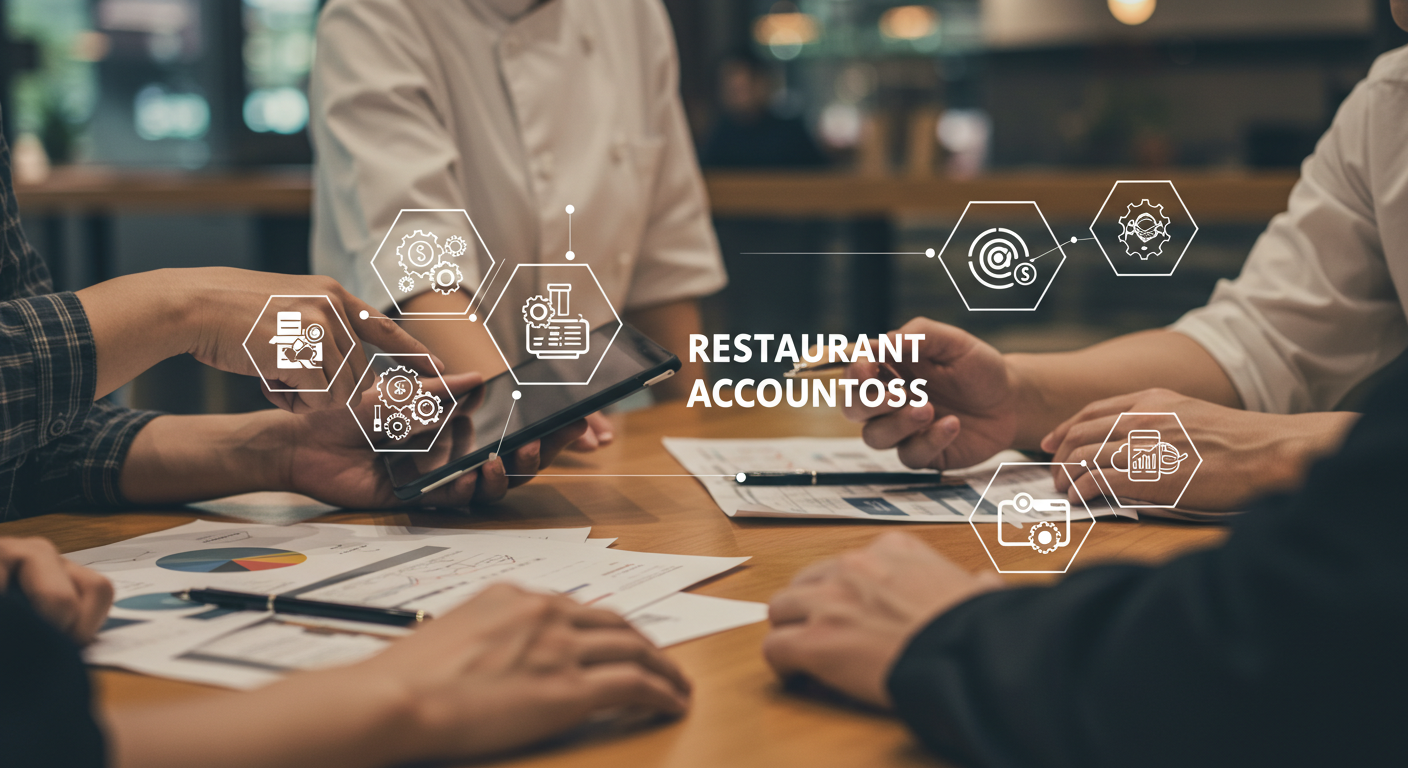
A restaurant is a balancing act. There isn’t much margin for error when profit margins are tight, labor costs tend to ratchet up quickly, and reports are seemingly endless. The last thing any restaurant owner wants is to spend money on accounting when they don’t have to, or worse, to overestimate or underestimate while not paying enough attention to their bookkeeping while causing inaccuracies in their financials. The good news is, with the right restaurant bookkeeping tools in place, i.e., accounting software, restaurant businesses can save money on accounting without sacrificing accurate, tax-ready accounting. One way is to enhance efficiencies, and one of the ways to enhance efficiencies is by implementing best practices in restaurant bookkeeping.
Restaurant Bookkeeping Basics You Can’t Skip
There are a few things you need to get right when it comes to bookkeeping for a restaurant:
- Reconciling daily sales with your POS reports form daily sales,
- Managing accounts payable and receivable,
- Processing payroll and proper tip distributions,
- Monitoring your prime costs (i.e. labor and food).
Doing these basic bookkeeping steps means you’ll end up with less messy records and compliance issues later; violating these basic concepts of bookkeeping may save money now, but create much larger financial problems or operational inabilities down the line.
The Biggest Cost Drivers in Restaurant Bookkeeping
Due to inefficient processes, many restaurants waste more on accounting than necessary. The following examples may be causing you to waste money:
- Poorly designed manual data entry from POS systems into accounting software.
- Unnecessary duplicate work between payroll, vendors, and managers.
- Inconsistent inventories that lead to unreliable cost of goods sold (COGS).
If you don’t engage in process improvement, you will continue to see bookkeeping costs rise, and the quality and accuracy of your bookkeeping practice for restaurants will decrease. That’s why as bookkeeping services for restaurants that do not allow for wasted time on manual processes, we focus on eliminating redundant and manual efforts.

Low-Cost, High-Accuracy Moves
1. Automate Your POS Accounting and Payroll Integration
The little things are where cost savings are found, and the first cost-saving action is automating the flow of data. Many restaurant bookkeeping services will integrate POS with payroll and accounting systems. Using an integrated approach eliminates hours of data entry and dramatically reduces errors. Cloud accounting apps for restaurants like Toast, Square, or Lightspeed allow the restaurant owner or operator to easily reconcile each day.
2. Use a Standard Chart of Accounts
Restaurants have specific needs when it comes to day-to-day bookkeeping. Using a defined chart of accounts (COA) with classified expense accounts, class codes for sales, and payroll accounts will enhance your bookkeeping accuracy, uniform monthly reporting, and accurate comparative reporting. For example, using a 12 or 13-period calendar or simple monthly close, standardized COA allows management to save time and prevent mistakes.
3. Automate Your Payroll and Accounts Payables
The restaurant manager doesn’t want to be buried in an avalanche of invoices or entering payroll randomly. Automated invoice capture, payroll systems, and compliance monitoring, as well as truck and tip allocations, reduce mistakes and unnecessarily created time – and eliminate time-consuming payrolls.
4. Tighten Up Your Inventory Management Practices
Control and cost management risk occurs regularly with inventory – restaurant inventory often leaks profits. Scheduling regular inventory counts, controlling waste, using an inventory control software platform, and continually reviewing the utility of the inventory will protect and enhance profit margins. Tight inventory management practices can improve basic bookkeeping accuracy, by verifying proper COGS numbers.
When to Outsource versus In-House
Making the decision whether to hire a bookkeeper for restaurants, or have a firm perform bookkeeping functions is a matter of cost and need.
- Best to do in-house: daily cash controls, approve comps and voids, and inventory counts.
- Best to outsource: monthly bookkeeping, run payroll, sales tax filings, year-end prep, and clean-up work.
Outsourcing lowers fixed payroll cost and utilizes the expertise from professionals who only do one thing, and that’s bookkeeping for restaurant operations. Which means that you are getting accuracy without the cost of a full-time accountant.
A One-Hour-a-Day Close Routine
A regular bookkeeping cadence lowers costs and pain points:
- Daily: Importing POS data, deposit verification, tips and sales tax check.
- Weekly: Spot-check on invoices and vendor statements.
- Monthly: Full reconcile, sales tax filings, and P&L participation with prime-cost review.
When managers follow this basic routine, they avoid costly end-of-year cleanups and are always tax ready.
How a Restaurant Bookkeeping Service Like Ceptrum Helps
When you are a restaurant owner, the best way to save money without sacrificing control is to work with a professional partner to outsource a process. A restaurant bookkeeping service, like Ceptrum, provides:
- Monthly bookkeeping for restaurants that keeps your financials up-to-date
- Payroll services with full payroll support, including compliance checklists and employee self-service portals
- Easily readable financial reports that promote better decision making
- Tax ready books and a clean sales tax compliance process
- Catch-up and clean-up bookkeeping services when you fall behind on your operations and finances
Working with a restaurant bookkeeping service provides business owners with accurate reporting for 1/2 or less of the cost than employing in-house personnel.
FAQs on Restaurant Bookkeeping
- How much does a bookkeeper for restaurants cost?
It depends on your size and complexity. Outsourced services often charge a flat monthly fee, which is usually more affordable than hiring an in-house accountant.
- Should restaurants use cash or accrual accounting?
Both are allowed, but accrual offers a clearer picture of performance. Consistency is key.
- What POS systems work best with restaurant bookkeeping?
POS systems like Toast, Square, and Lightspeed offer strong reporting and direct accounting integrations.
- How often should restaurants count inventory?
Monthly at a minimum. Weekly cycle counts improve accuracy and reduce surprises.
- What reports should restaurants review monthly?
P&L (with prime cost focus), balance sheet, cash flow, and sales tax reports are essentials.
Read More:
March 15 – Deadline for S Corporations, Partnerships, and many LLCs
Final Thoughts
Restaurant owners don’t need to choose between saving money and staying accurate. By integrating technology, following disciplined routines, and outsourcing the right functions, restaurants can lower accounting costs and still enjoy tax-ready, compliant financials. With the right restaurant bookkeeping service, you can keep your margins lean and your books error-free.
